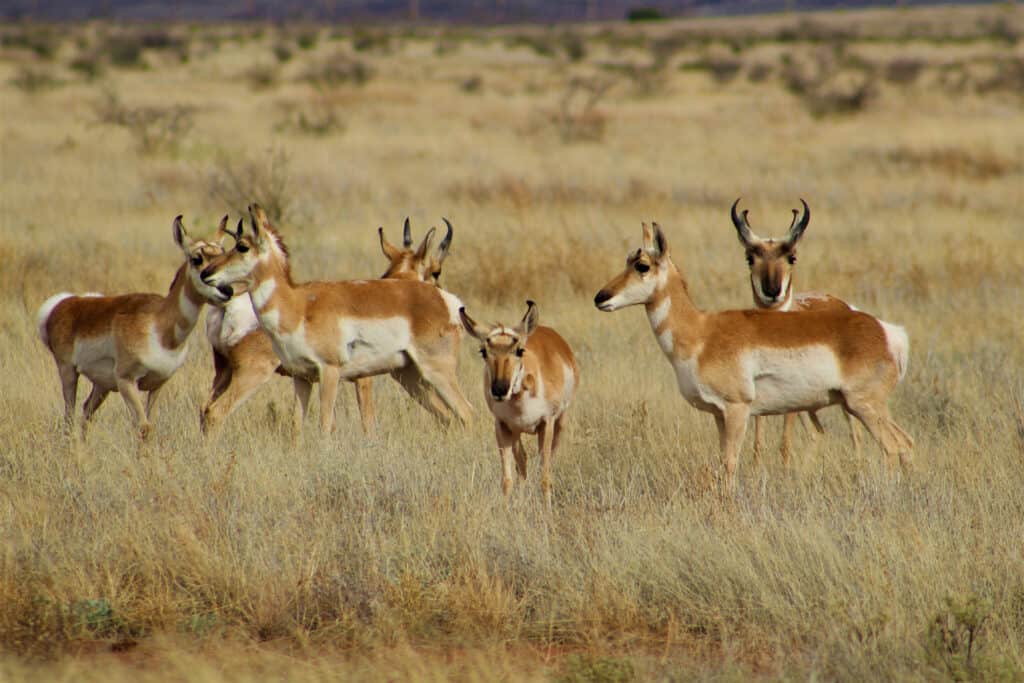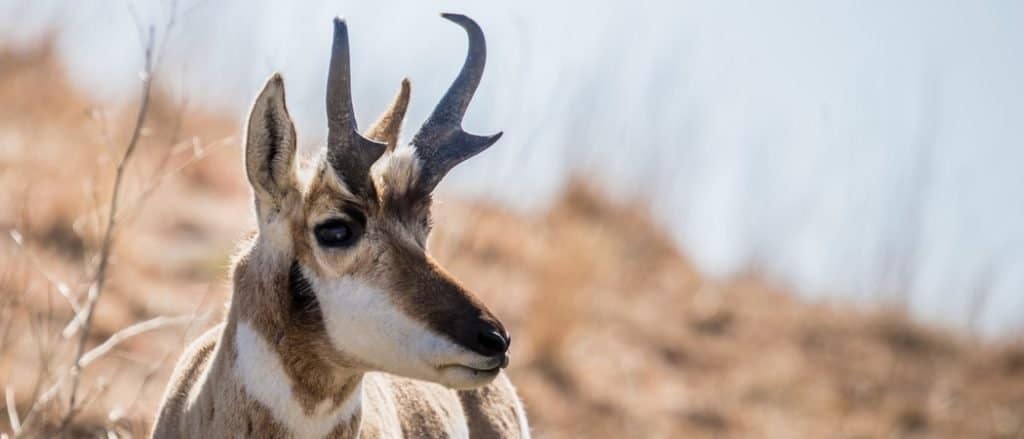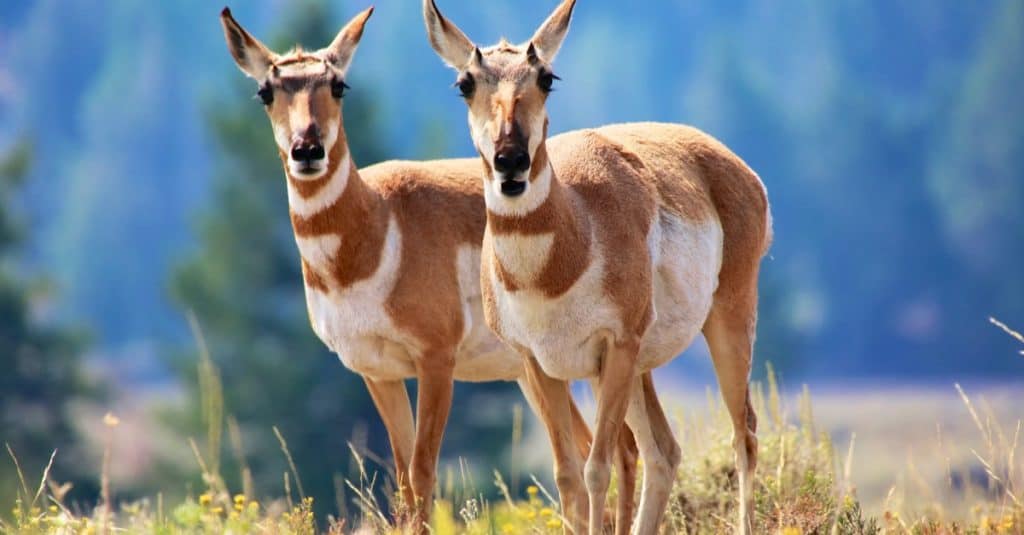Pronghorn? You may be wondering, “What is that?” before even asking about the pronghorn population. It’s the Antilocapra americana or the American antelope. Pronghorns are most certainly an interesting and often overlooked animal. In terms of evolutionary relationships, pronghorns are closer to the Cervidae family of deer and elk than to the family of cattle, goats, sheep, antelopes, and gazelles. In fact, they are actually more closely related to giraffes than any of the former animals.
The pronghorn antelope is the land mammal that holds the record for the fastest top speed in the Western Hemisphere, which is 55 miles per hour. Is it feasible to make an educated guess as to the overall number of these fascinating species that are still alive today? Continue reading to find out!
How Many Pronghorns Are Left in the World?

Pronghorn
antelope
herds in Wyoming and Montana’s high desert plains are amazing to see.
©Charles Lemar Brown/Shutterstock.com
Around 1,100,000 pronghorns are free to roam in many states. It is truly a sight to watch the vast herds of pronghorn antelope that inhabit the high desert plains of Wyoming and Montana. Despite the fact that they represent one of the most significant achievements in terms of animal conservation in North America over the course of the last century, relatively few people are aware of this fact. These magnificent creatures once numbered a total of 13,000 individuals at most. However, owing to hunters and people who care about conservation, they were kept from going extinct.
How Long Have Pronghorn Been In Existence?
Fossils of the American pronghorn have only been discovered in areas that were occupied during the Pleistocene epoch. These regions encompass not just the southernmost part of Canada and the southwestern part of the United States, but also the northernmost part of Mexico and the southwestern part of the United States. In the northern section of Nevada, the remains of the American pronghorn have been unearthed in three distinct caverns.
How Are Pronghorns Beneficial to Our Ecosystem?

Few people know about pronghorns even though they’re North America’s fastest-hoofed animal.
©Jen DeVos/Shutterstock.com
The pronghorn is a fascinating animal, yet many people don’t know very much about them. They are capable of running faster than any other mammal in North America with their hooves. They can cover more ground in the lower 48 states than any other species. The question then becomes, how significant of a part do they play in the ecosystems that make up our planet?
The presence of pronghorn can be used to identify whether or not a healthy sagebrush system is present. This is important because these systems are susceptible to being damaged by fragmentation and degradation.
Is The Pronghorn Population Endangered?
Since the 1930s, conservation initiatives and stricter hunting rules have resulted in an increase in the pronghorn population to over 1,000,000 individuals. Although the expansion of bluetongue disease in sheep has resulted in the demise of a few isolated populations in recent years, the general trend is positive and should be celebrated. Still, the Sonoran pronghorn is one of the top 10 species in the United States that is in danger owing to a lack of water or pollution. This list was compiled by the Center for Biological Diversity. Pronghorn populations have been classified as endangered since 1967. Without concerted measures to reduce the effects of climate change around the globe, there is no chance these populations can recover.
The pronghorn still faces the challenge of a scarcity of water. In addition, there are other dangers such as off-road traffic, development, and activities conducted by the Border Patrol. For example, when there is a drought, pronghorns are unable to relocate to locations that are more verdant. This is due to their feeding grounds having been interrupted by roads and other developments.
Will Pronghorn Go Extinct?

Pronghorn antelopes developed lightning-fast speed to escape lions and wolves.
©matthieu Gallet/Shutterstock.com
The lightning-fast speed of the pronghorn antelope evolved so it could run away from predators like lions and wolves. Pronghorns won’t be able to outrun the effects of climate change no matter how fast they are.
Both adult and juvenile Sonoran pronghorns are facing a significant challenge to their ability to survive in the Southwest. This is a direct result of the severity and frequency of recent droughts in that region. A severe drought that began in the United States in 2002 was responsible for losing over 80 percent of the pronghorn population.
Due to the fact that the survival of fawns is extremely dependent on the patterns of rainfall, the herd’s population growth is also being hindered by the drought. If it doesn’t rain, there won’t be enough food for the weaned fawns and the adult pronghorn. Therefore, they won’t be able to survive. The provision of water by federal and state managers is currently required. This is in order to forestall the extinction of the herd in the United States during the dry season.
The photo featured at the top of this post is © Greens and Blues/Shutterstock.com
Thank you for reading! Have some feedback for us? Contact the AZ Animals editorial team.






